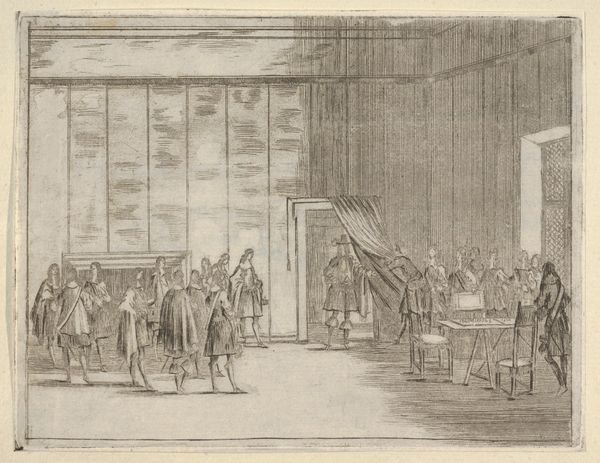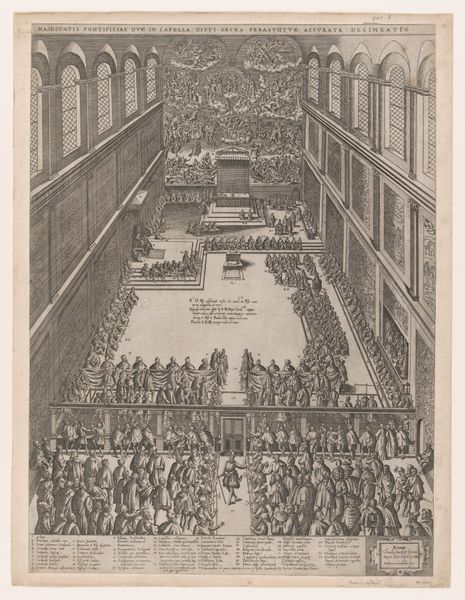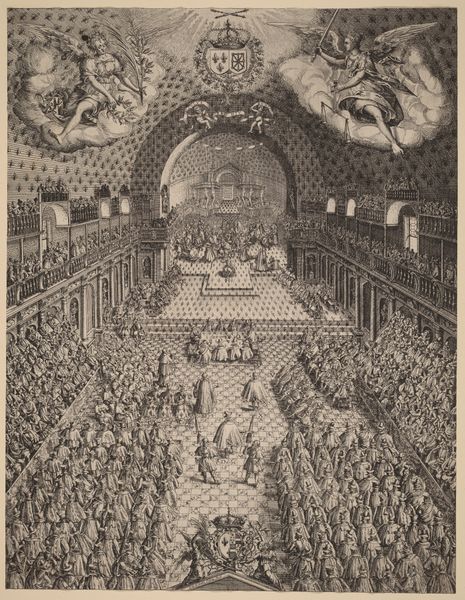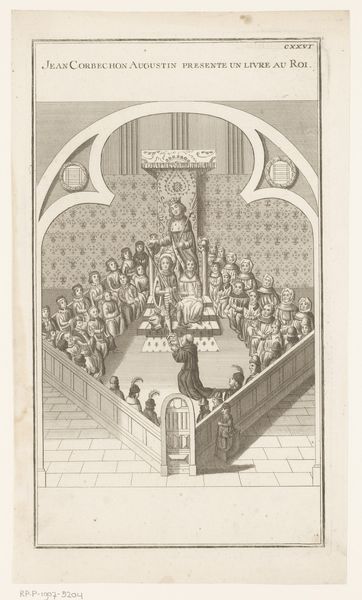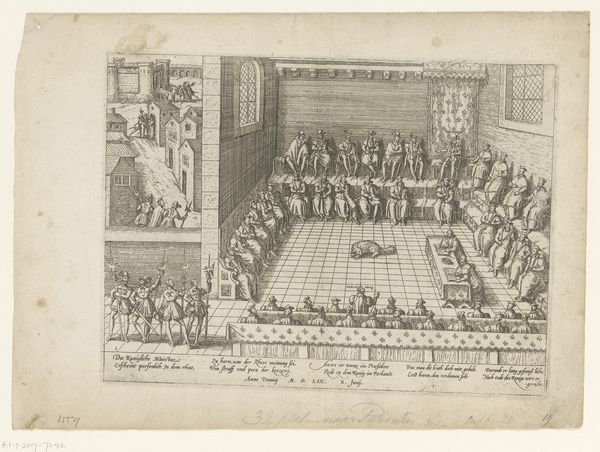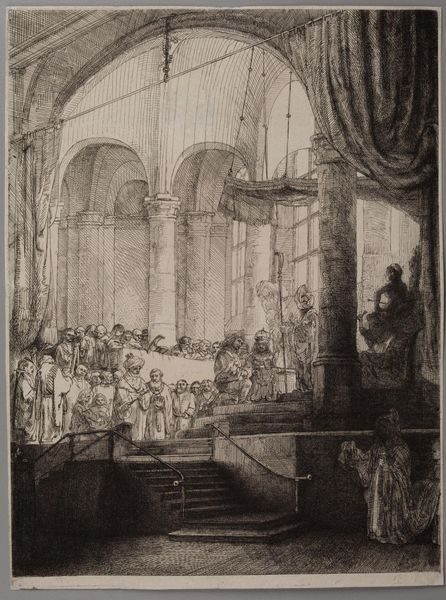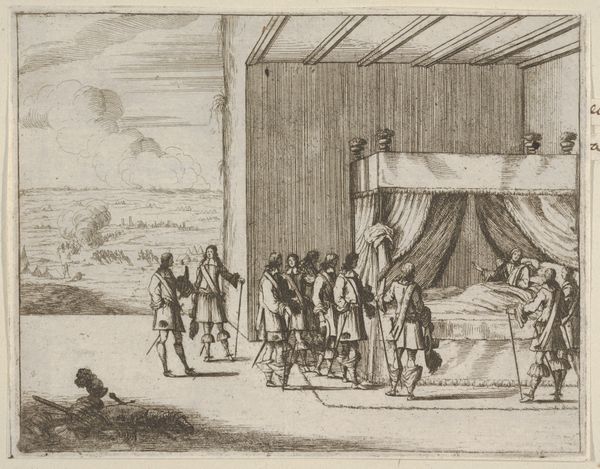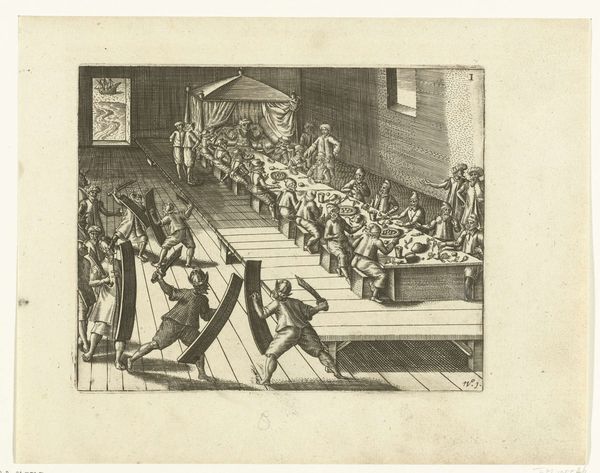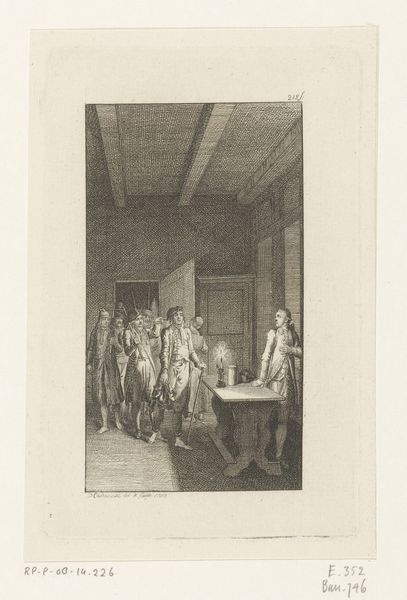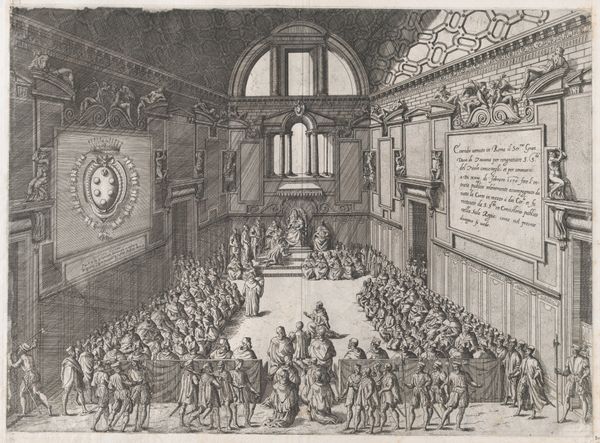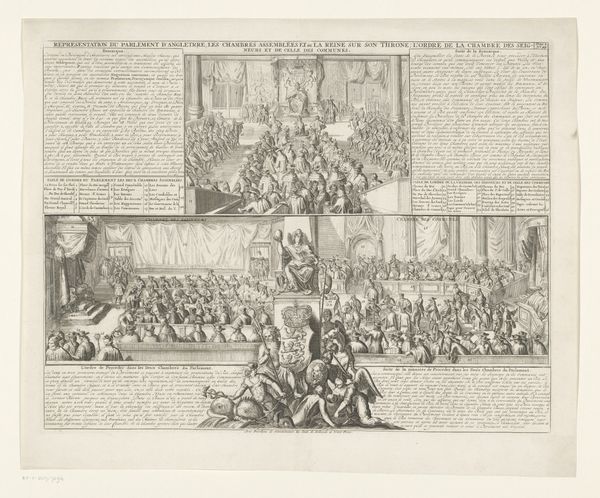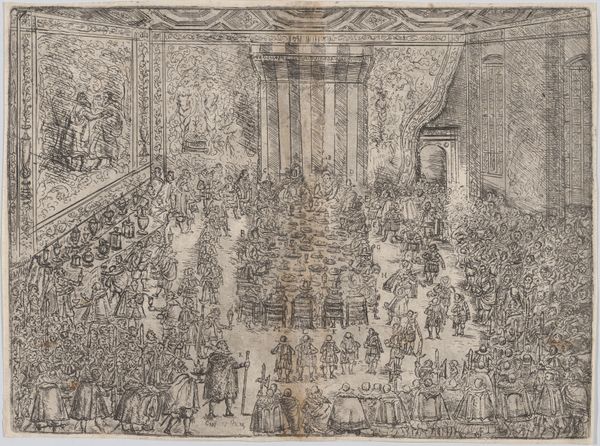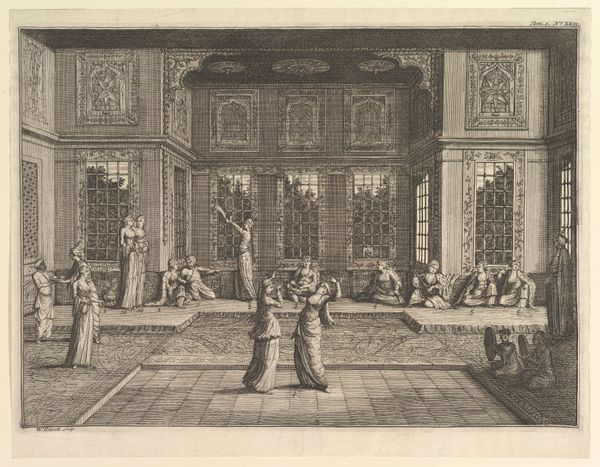
Le Cercle De Leurs Magestes Dans La Chambre De Presence: A: S. Iames; illustration from 'Histoire de l'entrée de la Reyne Mère dans la Grande Brètaigne' 1639
0:00
0:00
drawing, print, engraving
#
drawing
#
narrative-art
# print
#
genre-painting
#
history-painting
#
academic-art
#
engraving
Dimensions: Sheet: 11 1/16 in. × 8 in. (28.1 × 20.3 cm)
Copyright: Public Domain
Editor: Here we have an engraving from 1639, titled "Le Cercle De Leurs Magestes Dans La Chambre De Presence: A: S. Iames," attributed to an anonymous artist. It's incredibly detailed! The figures almost seem arranged, like pieces in a game. What do you see in this piece that I might be missing? Curator: What strikes me is the level of detailed labour involved in producing this print, and how that speaks to the power dynamics it depicts. Engraving was a highly skilled, time-intensive craft. The choice of printmaking allowed for wider dissemination of this image of royal power – mass production, of sorts. But who was consuming this image, and what did its accessibility mean for ideas about monarchy at the time? Editor: So you’re saying the very act of creating and distributing the image using printmaking methods had political implications? Curator: Precisely. Consider the social context. We're talking about early modern Europe. Monarchs were carefully cultivating images of themselves. And printmaking provided a vehicle for managing their public image, literally manufacturing consent through meticulous production of objects – and that production itself required resources, craftspeople, and patrons. How does that change our understanding of ‘history painting’? Editor: It's less about celebrating a historical event and more about… manufacturing a royal brand, through skilled labor and careful material choices? That the material processes are almost as important as the event? Curator: Exactly. The image is no longer just about the event, but about how the monarchy controlled its representation through the means of production and the available technology of print. The choice of material itself became an element in exercising power. Editor: That's a completely different way of seeing it. It’s interesting how much meaning the method of production brings to the image. Curator: It opens up new avenues to consider. Thinking about the material means through which it reached its audience changes the meaning completely.
Comments
No comments
Be the first to comment and join the conversation on the ultimate creative platform.
